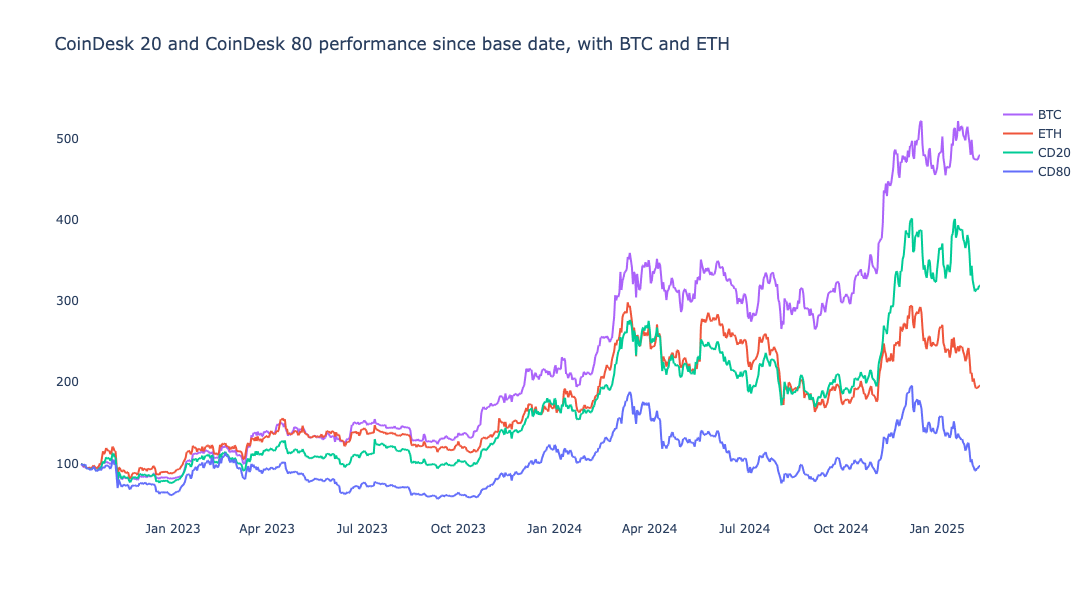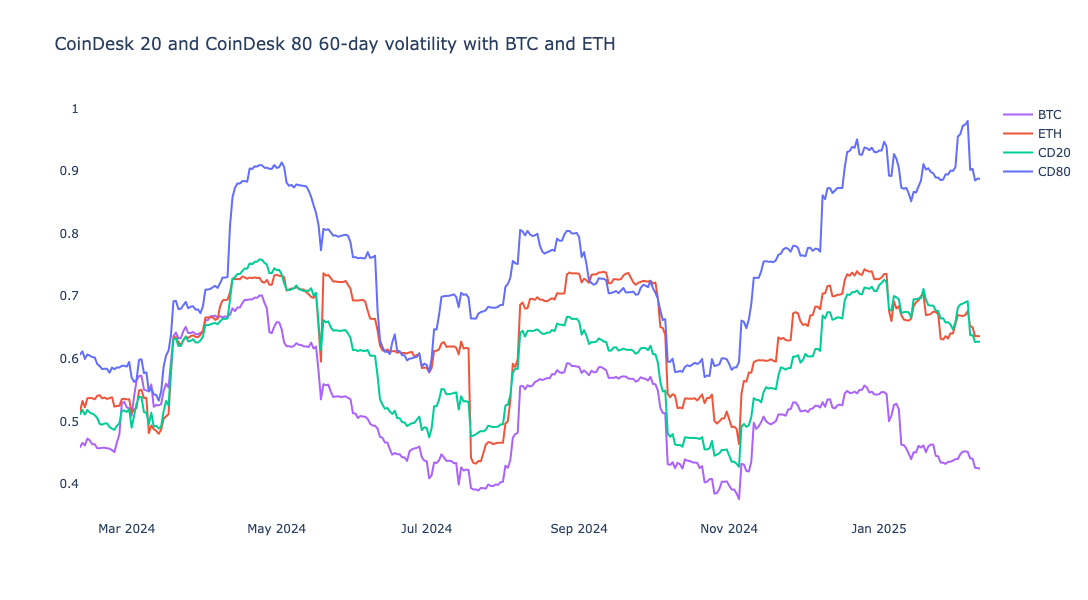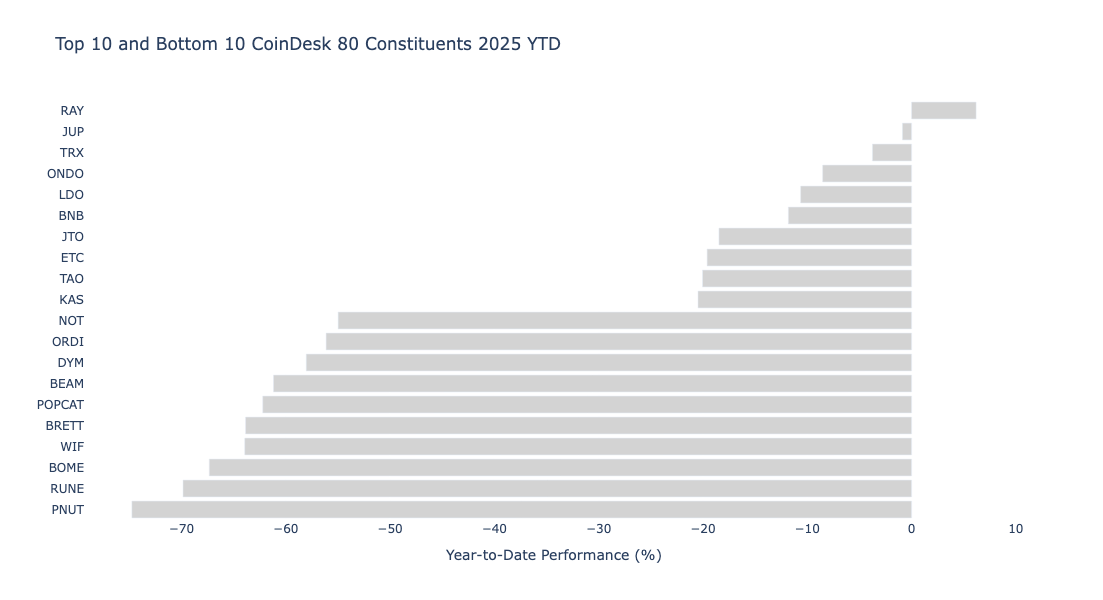Crypto mid-caps are struggling. While some digital asset investors may seek hidden gems and future powerhouses in the next tier of market capitalization and liquidity, that pursuit has generally not been rewarded. Furthermore, mid-caps have delivered significantly higher volatility. Less reward, more risk. What gives?
Is this a mirror of “Mag 7” dominance in equities, a lack of promising assets in the mid tier or just the future of finance taking longer to bear fruit than we previously thought?
You’re reading Crypto Long & Short, our weekly newsletter featuring insights, news and analysis for the professional investor. Sign up here to get it in your inbox every Wednesday.
We define our size segments using the CoinDesk 20 and CoinDesk 80 indices. CoinDesk 20 captures the performance of top digital assets with some constraints to promote adoption in a number of places and products — specifically, no memecoins, access to U.S. investors, select exchange listings and liquidity in specific pairs. CoinDesk 80 captures the next 80 assets outside of CoinDesk 20 — still reasonably large and still measurably liquid with fewer restrictions and more trading pairs allowed. In other words, the mid-caps.
Both indices have a base date of Oct. 4, 2022 and a base value of 1000. As of this writing, CoinDesk 20 sits at around 3200. CoinDesk 80 sits at 970. You read that right: the CoinDesk 20 index has delivered a 320% return since its base date, while the CoinDesk 80 index has lost 3%.

The volatility of CoinDesk 80 sits well above that of CoinDesk 20, although its patterns follow those of the other index and majors bitcoin and ether.

What are these difficult digital assets in the mid-cap segment? Ill-conceived platforms? Frivolous projects? Not really. Although there are some highly volatile memecoins in the mix (I’m looking at you, PNUT), many constituents are household names.
If we narrow our view to year-to-date performance of current constituents (CoinDesk 80 was reconstituted on Jan. 31) we see that only one constituent is up on the year, yet many of the leaders (and laggards) are names we have known for some time.

Of course, pinpointing the underlying cause of the mid-cap underperformance is just as difficult in crypto as in other asset classes. Although size is one of the three classic Fama-French factors (suggesting that small-cap equities should outperform), it has not always been demonstrated in performance.
We suspect that while the crypto community will trade just about anything, it tends to invest in the biggest, the longest-tenured and the most familiar names. Regulatory accommodations (e.g., ETFs) will also follow this pattern, leading to a broader set of investors.
Does this suggest that a large-cap tilt in digital asset investing — the inverse of the Fama-French size factor — will deliver excess returns? We shall see, but in the meantime, we can keep an eye on the values of CoinDesk 20 and CoinDesk 80.

